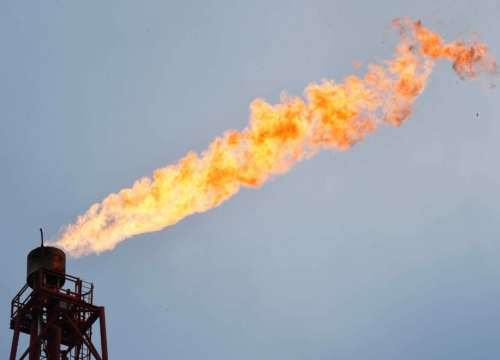LPG Exports are Declining, Associated Gas Flaring is Growing
The Ministry of Energy and the Ministry of Natural Resources are ready to return to discussing the deferment from paying increased fines for excess flaring of associated petroleum gas (APG) only at the beginning of 2023. This was reported by Kommersant.
The law allows flaring only 5% of APG production. When exceeded, increasing coefficients of fines are applied – 25 and 100.
After February, Russian oil companies stopped exporting liquefied hydrocarbon gases (LPG), which were mainly sold to Poland. Since February, the exchange price for them by the end of June fell three times – to a historic low of 5.5 thousand rubles. per ton.
In March, LUKOIL warned the government that it would be forced to send large volumes of APG to field flares, as there was a surplus of LPG on the market. A similar proposal came from the RSPP.
The Ministry of Natural Resources noted that other oil companies, in addition to LUKOIL, did not ask for a reduction in fines. According to the ministry, in 2022 LUKOIL will reduce the APG utilization rate to 84.6% from 97.4% in 2021 (by 1.3 billion cubic meters), while other companies will maintain their utilization rates at the same level.
The Ministry of Natural Resources considered the proposal of LUKOIL “unreasonable”: the ministry did not see a significant impact of sanctions on the export of LPG and a significant reduction in production. As noted in the document, LPG prices exceed the level of 2020, and “the negative dynamics of exchange trade indicators is compensated by the reorientation of export volumes to the domestic market.”
In five months of 2022, 8.73 billion cubic meters of APG were flared in Russia (plus 23% year-on-year). The main reason was the increase in flaring at new fields in Eastern Siberia (plus 1.12 billion cubic meters), while the volume of APG flared in Western Siberia and the Urals-Volga region, where large LPG producers are located, remained practically unchanged (plus 1.8% year-on-year). year).
In general, APG flaring is expected to increase by 13.7% for the year, to 21.38 billion cubic meters, mainly due to Eastern Siberia. The decline in LPG exports for the year is projected at 28–30%. Part of the volumes will be used in the domestic market as automotive fuel, while demand from the petrochemical industry is unlikely to increase significantly.











